You are here
Mount Rainier is one of the most recognizable mountains in the Pacific Northwest, and a bucket-list climb for any aspiring mountaineer. Climbing the Cascade Range's tallest volcano is a tough objective via any route (requiring a minimum of 9,500 feet of gain to summit) and all routes require climbers to have a solid base in snow and glacier travel.
The Kautz Glacier route (the Kautz) is the third most trafficked route on the mountain, but it only sees ~5% of climber traffic, compared to the two main Mountain Rainier climbing routes - Disappointment Cleaver (DC, which sees ~75% of climbers) and the Emmons-Winthrop (15% of climbers). As a result, the Kautz route feels remote in a way that the DC and Emmons don't. However, this remoteness isn't by accident - the Kautz has a shorter season than the DC, and requires climbers to be competent at climbing ice and steep snow, and to be self-sufficient (there are no staffed ranger stations on the route).
To climb the Kautz is a serious endeaver, and a definite step up above the DC and Emmons in terms of technical skills required. Almost everyone who attempts the Kautz has (at minimum) climbed Baker and/or Rainier via another route, and already have their fitness and glacier travel skills dialled. However, if you're ready for it, the Kautz is a complex and wonderful adventure, and is a great stepping stone to the most technical routes on Rainier.
Notes on Seasonality/Weather
The Kautz has been climbed in every season, and it is a very different climb depending on how snow fills in the ice steps. Seasonality also affects the approach, and at a certain point, it will be difficult to near impossible to safely cross the Lower Nisqually Glacier and to get up onto the Wilson Glacier, the lower glaciers on the route. Seasonality also plays a big part in the weather you can expect—generally mid-July to August have the most stable weather, but weather can come in and deteriote no matter what month it is, so make sure you're bringing gear that will keep you safe and that you know works for you.
Notes on Permits
Permitting on Mount Rainier can be a bit complicated to understand, and has been changing a lot due to COVID-19. Check the NPS Climbing Website to determine current requirements. As of August 2020, you will need 3 different "permits":
- A Mandatory "Climbing Cost Recovery Fee" (helps fund NPS SAR missions) which currently costs $51 (for those 26 and over) and ($31 for those 25 and under). You need to carry a receipt of your recovery fee in case a ranger wants to see it.
- A "Wilderness Permit" (which allows you to camp in the park) specifically for the region you want to camp in. For the Kautz route, depending on the number of nights you plan on doing, you'll want camping permits for "Kautz Alpine" and/or "Wilson Alpine" areas. This permit costs $20. As of August 2020, you'll need to print this and drop half off in a box at Paradise before you start your climb, then drop the second half after you've finished your climb. This lets rangers know you've made it down safely!
- A "Climbing Permit" (which allows you to travel above 10,000 feet). This is free.
Note: If you're trying to solo the route, you'll need additional forms and approvals.
Plan on the route taking between one and three days, depending on your efficiency and fitness.
Notes on Camping
Depending on how many days you are planning and where your backcountry camping permits are located, you have some options on where to set up camp. When planning out camps, you need to consider your descent plan, which we'll cover further into the guide, but also mention here.
If you are planning to complete the whole climb in 2 days, your best option is to camp at Camp Hazard, as Hazard sets you up well for an early start.
If you're doing the climb in 3 days, you've got some options:
- You can either do a short first day, camping at one of the sites listed below, then camp at Camp Hazard for night two, then summit and descend in a very long day (this method lends itself to a carryover) all the way back to Paradise.
- Or you can climb to Camp Hazard on day one, summit and descend back to Camp Hazard for night two, and then head back down to Paradise on day three.
Here's a list of standard camping sites, elevations, and some basic info:
- Wilson Bench (at 7300') - always snow camping, often used by guided climbs - "Wilson Alpine" camping permit.
- Shark Fin Camp (7700') - always snow camping, rarely used, beautiful - "Wilson Alpine" camping permit.
- Lower Castle Camp (9200') - can be dirt or snow camping - "Wilson Alpine" camping permit.
- Upper Castle (9500') - can be dirt or snow camping, often has running water - "Wilson Alpine" camping permit,
- Camp Hazard (10,800') - most common camp on the route, can be dirt or snow camping, often has running water, puts you in a great spot to get on the Kautz icefall first thing in the morning as you start your summit bid - "Kautz Alpine" camping permit.
Hypothetically, you could choose to do a carry over on the Disappointment Cleaver route and camp at Ingraham Flats or Camp Muir on your way down.
The Climb
This is a complex route, requiring a solid understanding of current climbing conditions and constant decision-making. In this guide, we're going to lay out a lot of options, along with some of the things you'll need to consider before and while you're on the route.
The climb starts at the aptly named Paradise trailhead, where you'll park in the overnight lot, drop off your check-in permit with the climbing rangers, and then start your climb.
You'll immediately have some options. Earlier in the season, you'll want to head straight up to Glacier Vista then drop down, while later season it's easier to take the Dead Horse Trail to the Moraine Trail. As you head up the beautiful alpine meadows above Paradise, you'll see marmots wandering around eating wildflowers and fattening up for their winter hibernation. Occasionally you'll hear loud chirps, and look over to see a marmot standing on its hind legs staring at you. Their noises can be surprisingly loud, and give them their nickname "whistle-pigs." To your south, on a clear day, you'll see Mount Adams, Mount Saint Helens, and Mount Hood, which is 100 miles away. Above you, Mount Rainier's imposing upper mountain will look terrifying, especially the towering rock spires and the seracs (ice-falls) of the Upper Nisqually Glacier. Don't worry, you're not going to be on any of the big terrain you can see!
Assuming you chose the "Glacier Vista" route, you'll break off the main trail at 6,300 feet and follow the bootpack down to the lateral moraine of the Lower Nisqually Glacier. From there, you'll rope up with your team before heading across the glacier. From the moraine, you'll see another two options - the "Fan" or the "Wilson Bench" routes. You'll need to choose which one is in better shape. Either brings you up to the broad ridge that leads toward Camp Hazard and the Kautz Glacier.
Once you're on the ridge, the route is relatively simple. You'll want to head generally up the ridge, following bootpacks (if they're present), toward Camp Hazard. At around 9,600 feet, you'll transition onto the Turtle Snowfield (look at the map to see where the name comes from), which will bring you up to Camp Hazard.
At the top of the Turtle Snowfield, you'll reach the new Camp Hazard, named after Hazard Stevens, one of the first known successful climbers on Rainier. The old one (which is still marked on USGS maps) used to be perched up at 11,600 feet, below a series of ice and rock cliffs, where there was a ton of overhead danger. Camp Hazard has since been moved down to a safer location at 10,800 feet with less rock/icefall potential.
Once you've reached Camp Hazard, you'll be able to see the Kautz ice and the upcoming challenges, and if you camp there, it's worth your time to head up the ridge a few hundred feet and scope it out in the daylight. To check out the route you'll first reach a cliffy section, and you'll skirt climber's left to the "rock step" (11,200'), a ~20' semi-sketchy downclimb that fills in with snow in early season. There's a ratty old rope attached to some tat that you can use to help you downclimb, though some will choose to rappel off the tat instead. From the top of the rock step, you'll be able to see the condition of the ice chute and plan out your summit push. Depending on your timing and the season, it can be anything from steep snow and penitentes to two ice steps (each around a pitch long and rated around AI2). You'll need pickets and/or ice screws to protect this section, and most folks will choose to want two ice tools/axes.
Keep in mind, there is a lot of rock and ice fall from the cliff bands near Camp Hazard, and as things warm up in the evening, you'll almost certainly hear the sounds of rock thundering down the mountain. Try not to be too intimidated. As long as you chose your campsite thoughtfully, you should be safe!
Once you've checked out the route, head to bed before your alpine start, and try to catch some sleep before the big summit push.
You'll then wake up at some ridiculously early time, and pack up if you're doing a carry over. Either way, you'll climb up the loose rock, descend the rock step, and traverse over to the Kautz Glacier. From here, you'll need to assess the current conditions and head up the ice, placing gear and simuling/pitching it out as as necessary for you and your team. At roughly 12,200 feet, the slope angle will decrease and you'll transition back to standard glacier travel spacing. Above, you'll see the Wapowety Cleaver to climber's right, and you can head up toward it. There are some sneaky bivy spots there around 13,000 feet if you've got great weather. From near the Wapowety Cleaver, you'll head up the Upper Nisqually Glacier to the top of Mount Rainier! Once you're up there, you'll want to check a GPS to make sure you're heading toward the Columbia Crest and the true summit— it's suprisingly difficult to figure out which lump is which!
Once you reach the summit (14,411'), drink in the 360-degree views of Washington state and all the surrounding peaks, which are thousands of feet below you. Make sure you take the time to look at the quarter-mile wide snow-covered crater, beneath which lurks fumaroles (volcanic vents), snow caves, and the highest lake in the continental United States (Lake Muriel), discovered by Bill Lokey in 1971. After you've enjoyed the view, head northeast to a lump of exposed rock east of the ridgeline, where you'll find a summit register in a box where you can sign your name and take shelter if it is windy.
Now the tricky part begins - how are you going to get down?
Descending
You've got two options here, each with its benefits and drawbacks:
Option 1: Descend the Kautz. You'll head back down the route, downclimbing/rappelling the ice pitches. Most guided groups do this.
- Pros
- Leaving your tent at Camp Hazard (so you don't have to climb the upper mountain with all your gear - though make sure you bring emergency gear to the summit).
- Familiarity with the terrain, having just ascended it.
- Cons
- Rappeling the ice pitches, which will take a while and can get sketchy if it warms up too much while on the route.
- Contending with more descending while on a roped up team. Descending from Camp Hazard down the Turtle to the Fan or across the Wilson Bench down to the Lower Nisqually, then unroping, then climbing back up ~400' to Glacier Vista.
Option 2: Descend the Disappointment Cleaver: You'll cross the crater, then descend the (generally) well-trodden and well-wanded route down the upper mountain to the Cleaver, then past Ingraham Flats to Camp Muir, then descend the Muir Snowfield to Paradise. Anecdotally, this seems more popular for private groups.
- Pros
- See a new part of the mountain.
- Descend down a bootpack put in and maintained by the guiding companies.
- Don't have to rappel anything, and once you get down to Camp Muir, you can drop off your blue bags, pack up your rope and glacier gear and descend down the 5,700 feet to Paradise.
- Cons
- Descending the Cleaver, which requires descending roughly 1000 feet of chossy loose rocks (with a lot of rockfall potential from other climbers), before crossing below the Ingraham seracs. This section sees a lot of accidents, so be extra careful through here.
- Lots of other climbers, guided and unguided.
- Carrying all of your gear over the mountain.
Remember, the descent is generally the most sketchy part of the climb—it's warmer, snow is sloppier, crevasses start opening up, rockfall gets worse, and you and your rope team are tired. Make sure you're fuelling properly and taking enough time to keep yourself and your team safe!
Finishing Up Your Climb
Once you've finally gotten back down to Paradise, look up at the mountain! You'll be able to see much of your route, including part of the Kautz Glacier peeking over a rock ridge. Make sure to check in with the rangers so they know you're down safely and don't fine you for forgetting to check out.
Logistics + Planning
Current Weather: Powered by Dark Sky








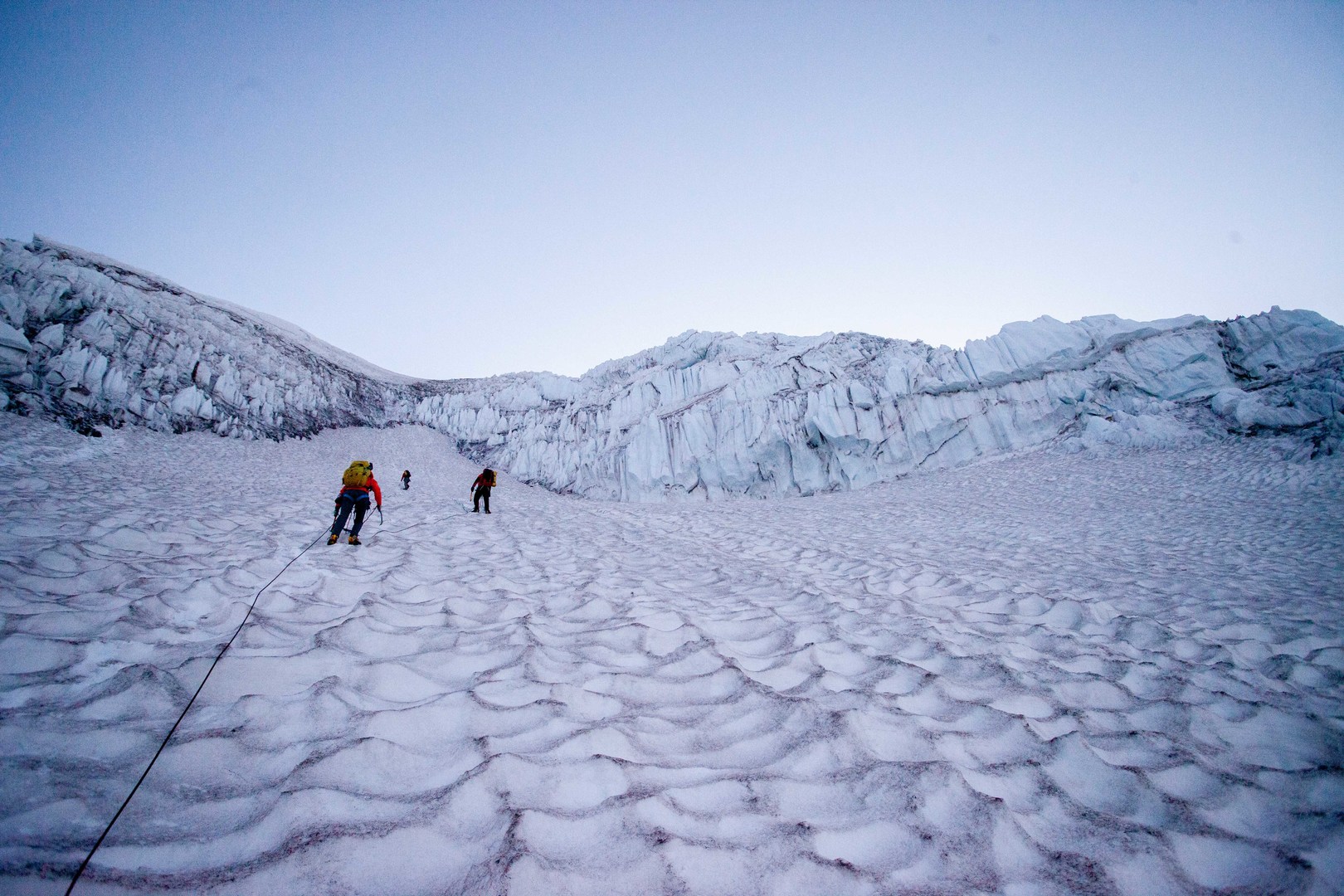












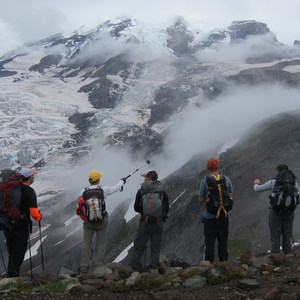


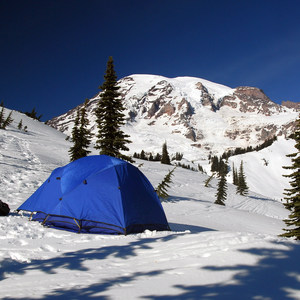
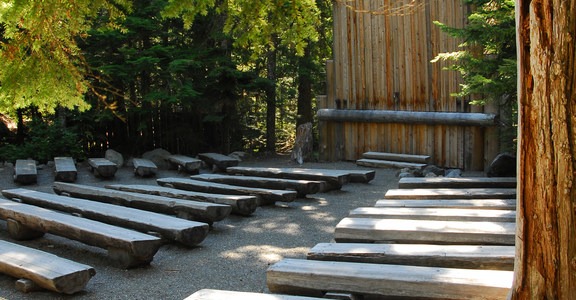
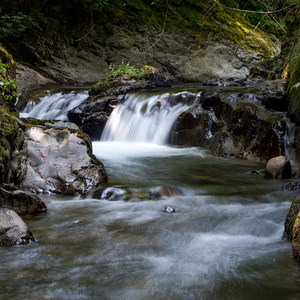



Comments
Sign In and share them.